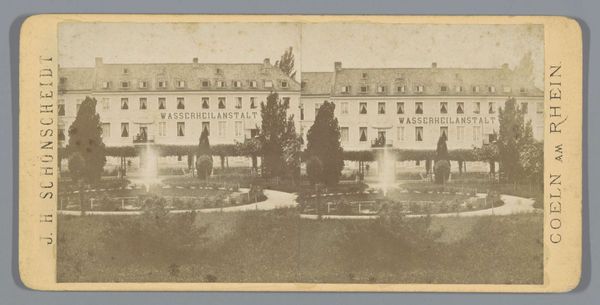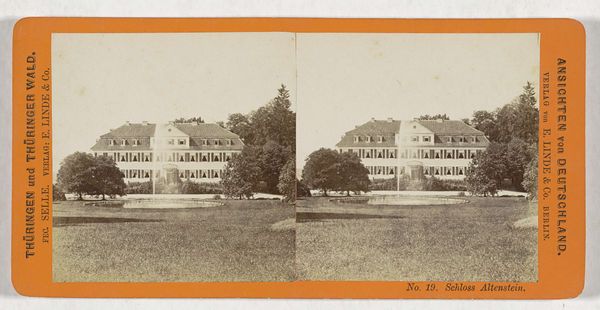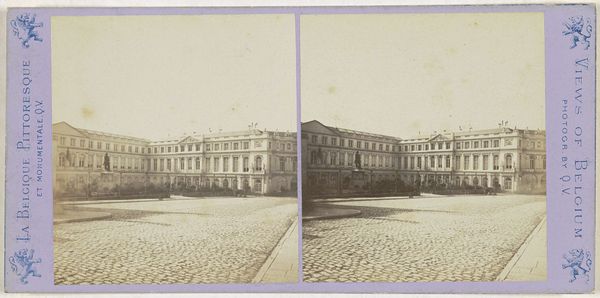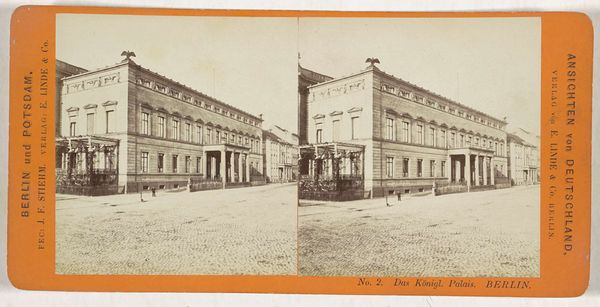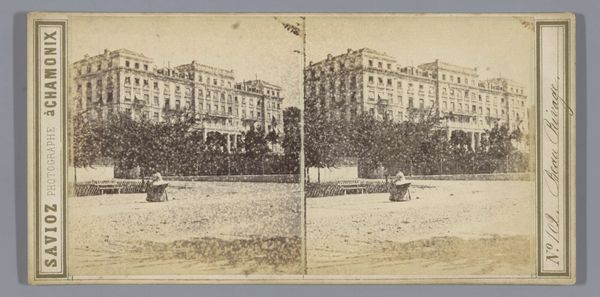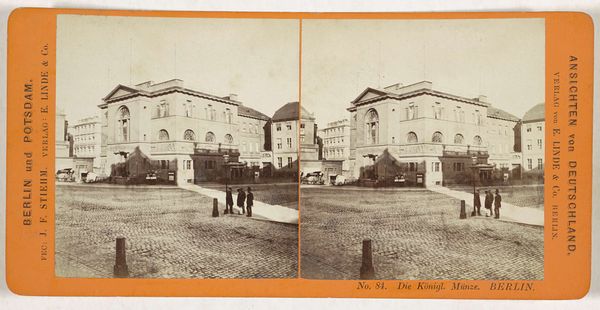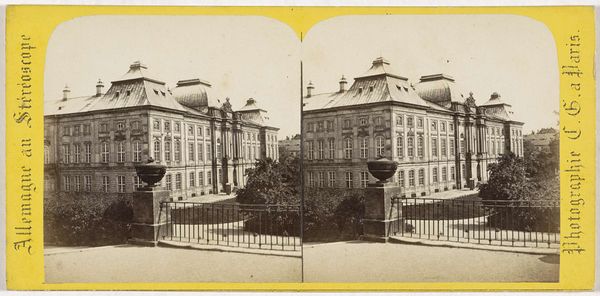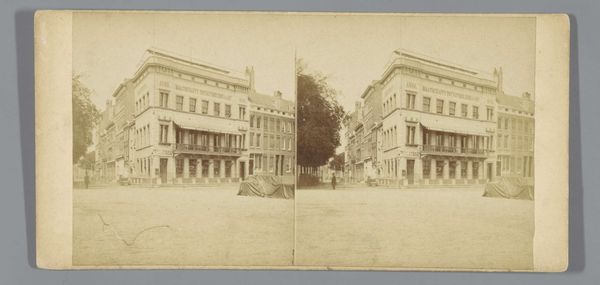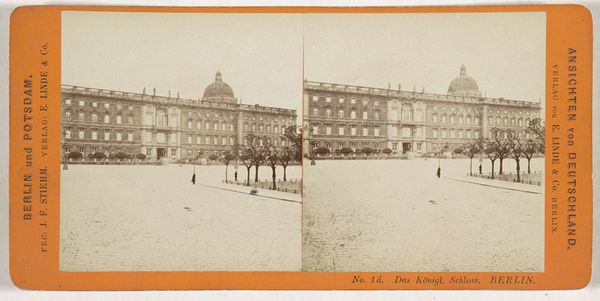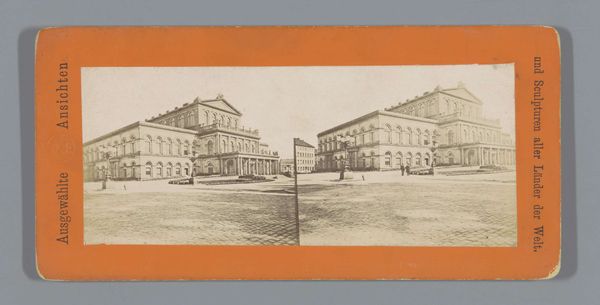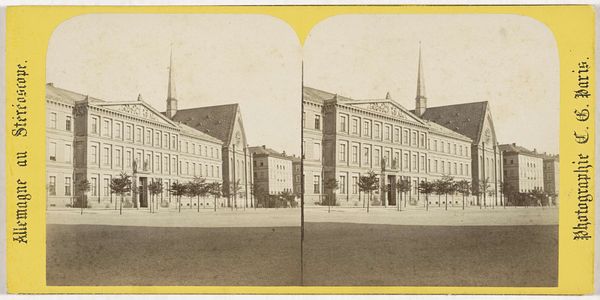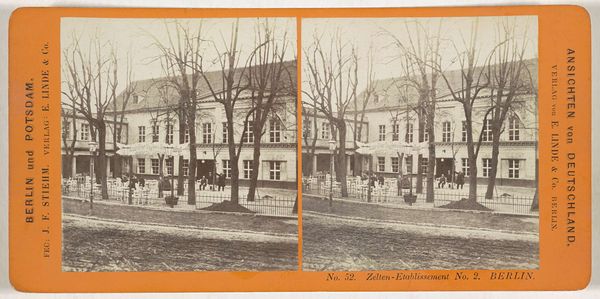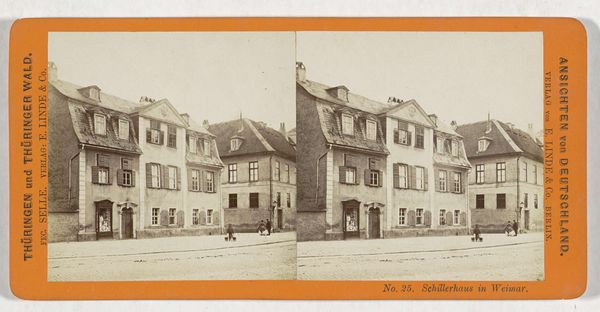
Dimensions: height 86 mm, width 176 mm
Copyright: Rijks Museum: Open Domain
Curator: This stereoscopic albumen print, "Slot Bellevue, Berlijn", created sometime between 1868 and 1870, is attributed to Johann Friedrich Stiehm. Quite the stately scene, wouldn't you say? Editor: Stately indeed, but initially rather… gray. It evokes a sense of somber authority. That cannon certainly punctuates the scene with a subtle threat, no? What about the production process of albumen prints fascinates you most? Curator: Well, I find it crucial to consider how prints like these democratized image consumption. Previously, such views were reserved for the wealthy, perhaps in paintings. Here, mass production allows for wider access, and a burgeoning industry supports that access, seen by the "Verlag von E. Linde & Co." imprint— they were central to the photographic trade then. Editor: I see your point about accessibility shaping art's role. How did these prints function within the evolving visual culture of the period, considering the rise of national identity? Were they just souvenirs, or did they contribute to a larger narrative about German power and sophistication, displayed for example in popular venues and shows? Curator: Both, perhaps! The stereoscopic format offers a depth that would impress viewers with Berlin's grandeur. Simultaneously, it feeds a tourist industry keen on capturing tangible memories. The subject matter is telling, the Bellevue Palace projected an image of stability even amidst immense social changes during the formation of a unified Germany. The cannon in the foreground does give me pause: an unmistakable symbol. Editor: Absolutely. This seemingly innocuous image participates in constructing a public image, one carefully curated for internal consumption and external perception. And seeing the producer credit included reminds us how central business interests were. Thinking of the materials used - albumen from eggs coating the paper, the labour involved in the dark room work, Stiehm’s position, this little artifact opens up so many questions. Curator: Precisely. It's about situating these objects within a web of cultural and economic practices to see their full value and the labour that goes into them. That said, after taking it all in, the image retains a subdued beauty. Editor: Yes, beyond its political and economic implications, there's something enduringly poignant about this glimpse into 19th-century Berlin—almost a melancholy, though perhaps that’s coloured by knowing all the tumultuous history that followed.
Comments
No comments
Be the first to comment and join the conversation on the ultimate creative platform.

